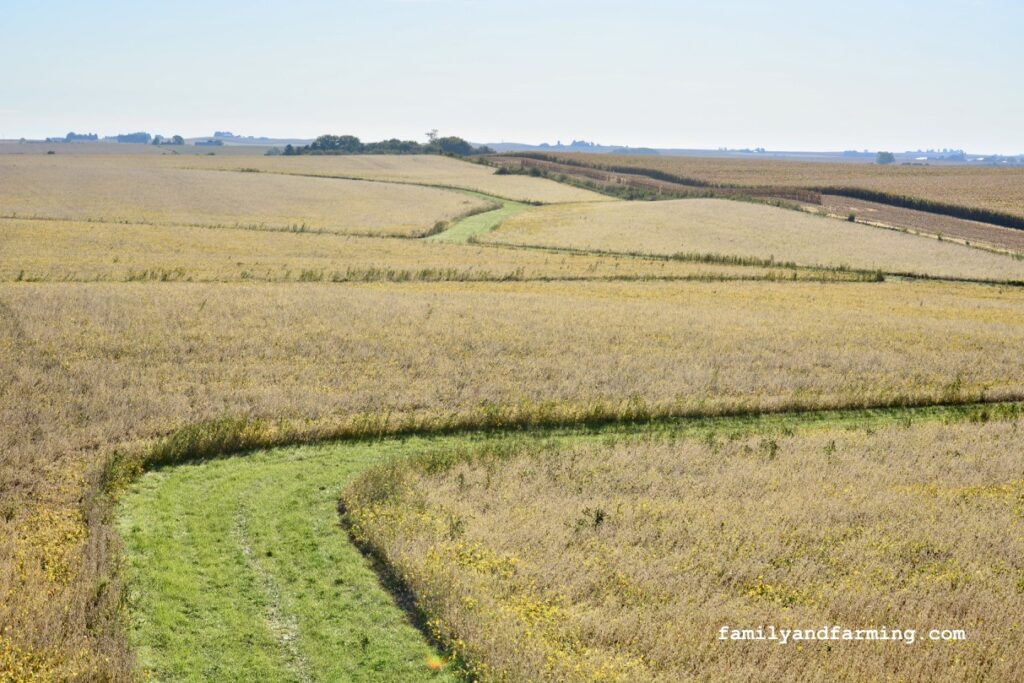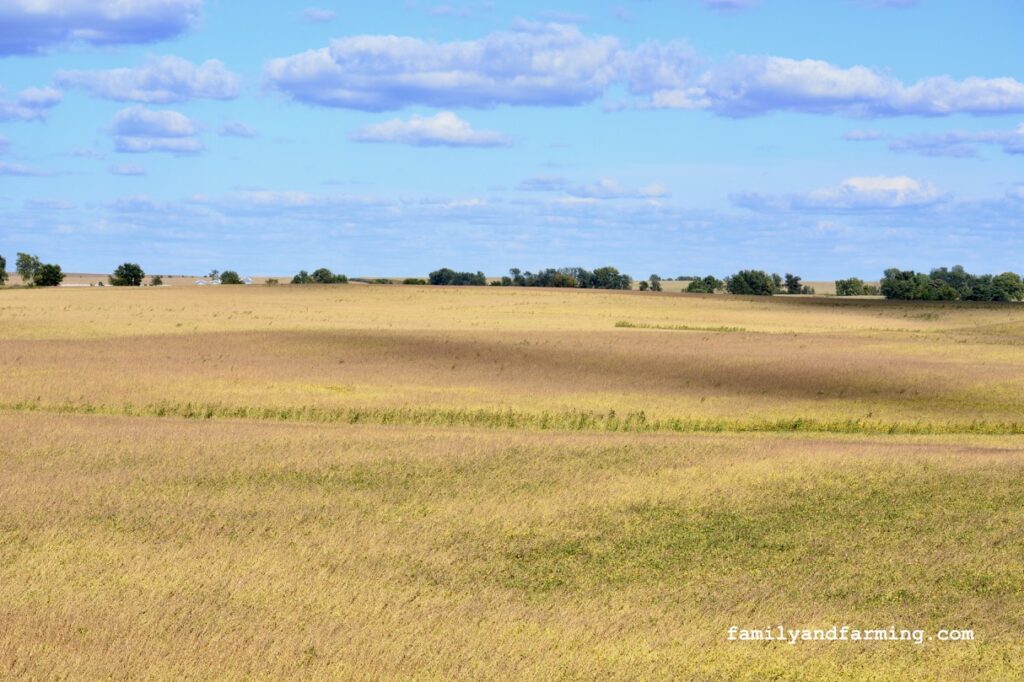Iowa is known for corn. US state maps have corn as an image for Iowa. If you’ve ever taken a drive through Iowa, you will see cornfields as far as the eye can see. Corn upon corn upon corn.
So why did we plant most of our farm in soybeans this year?
Two words. Crop rotation.

Why Practice Crop Rotation?
- Soybeans leave nitrogen in the soil for next year’s corn to thrive.
- The next year when you plant corn on beans, that corn crop will use 25% less nitrogen.
- Corn grown on soybean ground will be a super crop. Up to 20-40% better!
- Soybean seed is less than ½ the cost of corn seed.
- Soybeans put less pressure on the soil, as corn takes more inputs to grow well.
- Most importantly, soybean plants build up nitrogen into the soil.
- Corn leaves behind organic matter in combine trash for beans to grow.
- Beans and then corn lessens Rootworm issues, which in turn lessens the need for insecticide and treated seeds.
- Beans energize the soil for next year’s corn crop.
- Beans require less rain than corn. This year was a drought year. Yay beans!
- There was a lot of Rootworm last year, so many farmers in Iowa planted beans to try to eliminate Rootworm.
- Corn before beans will make a better bean crop.
Bottom Line- Crop Rotation Is Good For Dirt

What Are Soybeans Used For?
According to the USDA, 70% of soybeans are used for animal feed. That chicken in that sandwich you’re eating right now was fed ground up soybeans. There are 7.9 billion people in the world right now. That’s a lot of hungry mouths to feed! Soybeans are also used in cooking oils and biodiesel fuels. It’s a versatile grain!
Why Corn Is Still King
- Soybean yields are less than corn.
- The maximum bushels for beans is 55-85 bushels per acre.
- Our average is around of 55-60 bushels per acre.
- Historically, you may not make as much money with soybeans as corn.
Why Farmers Plant Corn on Corn on Corn
Many farmers plant corn on corn on corn on corn. As I’ve stated previously, corn on corn on corn makes the farmer more money. But it also comes with a cost to the soil. Corn on corn on corn requires more rain, fertilizer and inputs. If you throw more fertilizer on/in the dirt, you can plant corn on corn on corn.
Corn on corn on corn tends to make more money over time. The maximum bushels for corn is 200-250 bushels per acre. Iowa’s average is 180-200. With corn on corn on corn, bugs go crazy! Rotation will help to lessen that issue, but not entirely.
If Soybeans Are So Great, Why Not Plant Them Every Year?
So would it make sense to plant beans on beans on beans? You can, but beans on beans over the years can end up with more disease pressure, things like Sudden Death Syndrome and White Mold, which are ugly things.

Why Doesn’t Every Farmer Just Rotate?
It comes down to choice. Some farmers don’t like combining beans, as nearly perfect weather is required to combine beans. If conditions aren’t perfect, beans will have a hard time drying in the field. If you have over 15% moisture, the elevator may not take them. The “dock” for wet beans can be hefty. If you’re a farmer who has high risk, you want to make more money to pay for expensive inputs and machinery. Iowa has great dirt and usually optimal growing conditions. No irrigation, just rain from the sky. These conditions can grow bumper crops of corn.
But we have a different attitude. We use crop rotation and we are small by choice. We know our dirt and care about it. We plant slower, combine slower, build waterways, and our buffers around our streams are wider than required. We are smaller and slower by choice.
Being aware of the needs of the ecosystem we have been entrusted with is hard work. Sometimes “There’s no school like old school”!
Be Blessed!
Discover more from Family and Farming
Subscribe to get the latest posts sent to your email.


